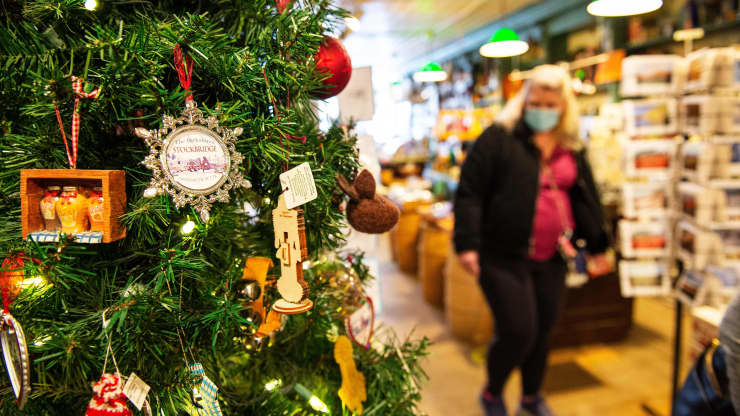By Melissa Repko@MELISSA_REPKO
Source: www.cnbc.com, January 2021
- Holiday retail sales rose 8.3% from 2019, according to data released by the National Retail Federation.
- The retail trade group said consumers embraced the gift-giving season as a way to cheer themselves up during the Covid pandemic.
- Holiday sales on average have increased 3.5% for the past five years, and they rose 4% in 2019, the NRF said.
Holiday retail sales rose 8.3% from 2019, according to data released by the National Retail Federation on Friday, as consumers embraced the gift-giving season as a way to cheer themselves up during the Covid pandemic.
“Faced with rising transmission of the virus, state restrictions on retailers and heightened political and economic uncertainty, consumers chose to spend on gifts that lifted the spirits of their families and friends and provided a sense of normalcy given the challenging year,” said Matthew Shay, president and CEO of the National Retail Federation, in a statement.
That’s more than the major retail trade group expected and more than double the average annual increase. NRF predicted in November that 2020 holiday sales would rise between 3.6% and 5.2% year over year, amounting to between $755.3 billion and $766.7 billion. It said Americans would spend more as they had fewer travel and dining out expenses and felt hopeful about the distribution of the Covid vaccine.
Holiday sales on average have increased 3.5% for the past five years, and they rose 4% in 2019, the NRF said. The sales exclude automobile dealers, gasoline stations and restaurants.
The pandemic shook up typical holiday shopping patterns. Many retailers started sales as early as October and kept stores shut on Thanksgiving Day. They put more deals online and expanded contactless options, such as curbside pickup to tamp down on the number of shoppers crammed in stores.
Even so, there were some factors out of retailer’s hands, such as economic uncertainty and unemployment during the recession and fewer gatherings with family and friends.
NRF Chief Economist Jack Kleinhenz said the sharp increase in holiday sales is “really quite phenomenal given the extremes that this economy has gone through.” He said month-to-month numbers have reflected the push and pull of factors, from temporary store closures and furloughs to stimulus payments.
He said the desire to celebrate the holidays is strong, even for low-income families and people who are unemployed.
“The holiday comes around once a year and even the most challenged people in terms of their economic situation still put an emphasis on the holiday, ” he said. “They will try to do the best they can.”
Holiday sales reflected pandemic trends, too, such as cooking and exercising at home and tackling DIY projects. Online and other non-store sales saw the largest jump, up nearly 24% year over year, according to NRF.
Sales at building materials and garden supply stores were up nearly 20%. That was followed by sporting goods stores sales, which were up about 15%, and grocery and beverage stores, which were up nearly 10%. Sales at health and personal care stores and at furniture and home furnishing stores grew 5% and 2%, respectively.
Sales at general merchandise stores were virtually flat. Electronics and appliance stores, however, saw a 14% drop in sales. Sales at clothing and clothing accessory stores plummeted by about 15%. Some purchases of laptops or pajamas were likely categorized as an online or non-store sale, as customers shopped from their couches or used options like curbside pickup. Also, some electronics purchases may have been made earlier in the year, as people worked and went to school at home.
Retailers have started to report some of their individual sales results. Lululemon, which has seen strong sales in athleisure as people work from home, forecast fourth-quarter earnings at the top end of its expectations because of strong of a strong holiday season. Target said comparable sales online and in stores jumped by 17% in November and December as holiday customers flocked to convenient, contact-free options like curbside pickup. Yet Nordstrom and Urban Outfitters reported disappointing holidays as many shoppers steered clear of malls.

